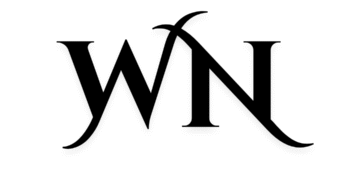New Delhi, July 11, 2025 – U.S. President Donald Trump has escalated global trade tensions by threatening a 10% additional tariff on countries aligned with the BRICS group, which includes Brazil, Russia, India, China, and South Africa, among others. The warning, issued via Truth Social on July 6, labels BRICS’ policies as “anti-American” and comes as the group held its 17th summit in Rio de Janeiro, Brazil. For India, a key BRICS member and a strategic U.S. ally, this puts New Delhi in a delicate position as it seeks to balance its global partnerships while pursuing a trade deal with Washington.
Trump’s Tariff Threats: What’s at Stake?
Trump’s latest move follows his April announcement of steep tariffs on nearly all U.S. trading partners, which were paused for 90 days to allow negotiations. With the new deadline set for August 1, Trump has singled out BRICS nations, accusing them of undermining the U.S. dollar’s dominance. He previously threatened 100% tariffs on BRICS countries if they pursued de-dollarization, a policy some members like China and Russia have explored, but which India has explicitly rejected.
The BRICS summit’s joint statement criticized “unilateral tariff measures” as harmful to global trade, without naming the U.S. This prompted Trump’s swift response, warning that any country supporting BRICS’ “anti-American” stance would face the additional 10% tariff, with “no exceptions.” The BRICS bloc, representing nearly half the world’s population and 40% of global economic output, has grown in influence, adding members like Saudi Arabia, Iran, and Indonesia. However, its diverse membership includes both U.S. adversaries and allies, complicating Trump’s blanket threat.
India’s Tightrope Walk
India finds itself caught between its commitment to BRICS and its deepening ties with the U.S. New Delhi has maintained that it does not support a common BRICS currency or efforts to weaken the U.S. dollar, a stance reiterated by Indian officials following Trump’s threats. “India’s presence in BRICS is about fostering economic cooperation, not challenging the U.S.,” said a senior diplomat at a recent press briefing. During Prime Minister Narendra Modi’s visit to Brazil for the summit, no discussions on Trump’s tariffs reportedly took place with Brazilian President Luiz Inácio Lula da Silva, signaling India’s cautious approach.
India is also racing to finalize a trade deal with the U.S. before the August 1 deadline to avoid higher tariffs. Negotiations have progressed, with the first phase reportedly complete, but Trump’s latest warning has raised doubts. Indian officials remain optimistic, banking on India’s strategic importance to the U.S., particularly as a counterweight to China in the Indo-Pacific region. New Delhi’s refusal to endorse de-dollarization is seen as a key factor that could soften Washington’s stance.
Global Reactions and India’s Options
Other BRICS members have responded more forcefully. Brazil’s President Lula called Trump’s threats an attempt to act like a global “emperor,” while China emphasized that BRICS is not a confrontational bloc. The Kremlin also denied any anti-American agenda, with spokesman Dmitry Peskov stating the group seeks cooperation, not conflict. These responses highlight the challenge India faces in navigating BRICS’ collective stance without alienating the U.S.
Analysts suggest India has several options. First, it could double down on diplomacy, emphasizing its neutral currency stance and strategic alignment with Washington to secure a favorable trade deal. Second, India could leverage its upcoming 2026 BRICS chairmanship to steer the group toward less provocative policies, reducing the risk of U.S. retaliation. Finally, New Delhi could diversify its trade partnerships, strengthening ties with Europe and ASEAN nations to offset potential U.S. tariffs.
Economic and Strategic Implications
Trump’s tariffs, if imposed, could disrupt India’s exports to the U.S., its largest trading partner. Sectors like pharmaceuticals, IT services, and textiles could face higher costs, potentially raising prices for U.S. consumers and straining India’s economy. Indian drugmakers, already worried about Trump’s earlier 200% tariff threats, are exploring new markets to reduce reliance on the U.S.
Strategically, India’s balancing act reflects its broader foreign policy of multi-alignment. While BRICS offers a platform to amplify the Global South’s voice, India’s ties with the U.S. are critical for defense cooperation and technology transfers. “India must tread carefully,” said Mohan Kumar, a former Indian envoy. “Trump’s tariffs are a negotiating tactic, but they also signal his sensitivity to any challenge to U.S. economic dominance.”
Looking Ahead
As the August 1 deadline looms, India’s response will shape its economic and diplomatic trajectory. New Delhi’s ability to secure a trade deal while maintaining its BRICS role will test its diplomatic finesse. For now, Indian officials are monitoring the situation closely, hopeful that their strategic value to the U.S. will outweigh Trump’s tariff threats. With global trade tensions rising, India’s choices will resonate far beyond its borders, influencing the future of BRICS and the global economic order.







































